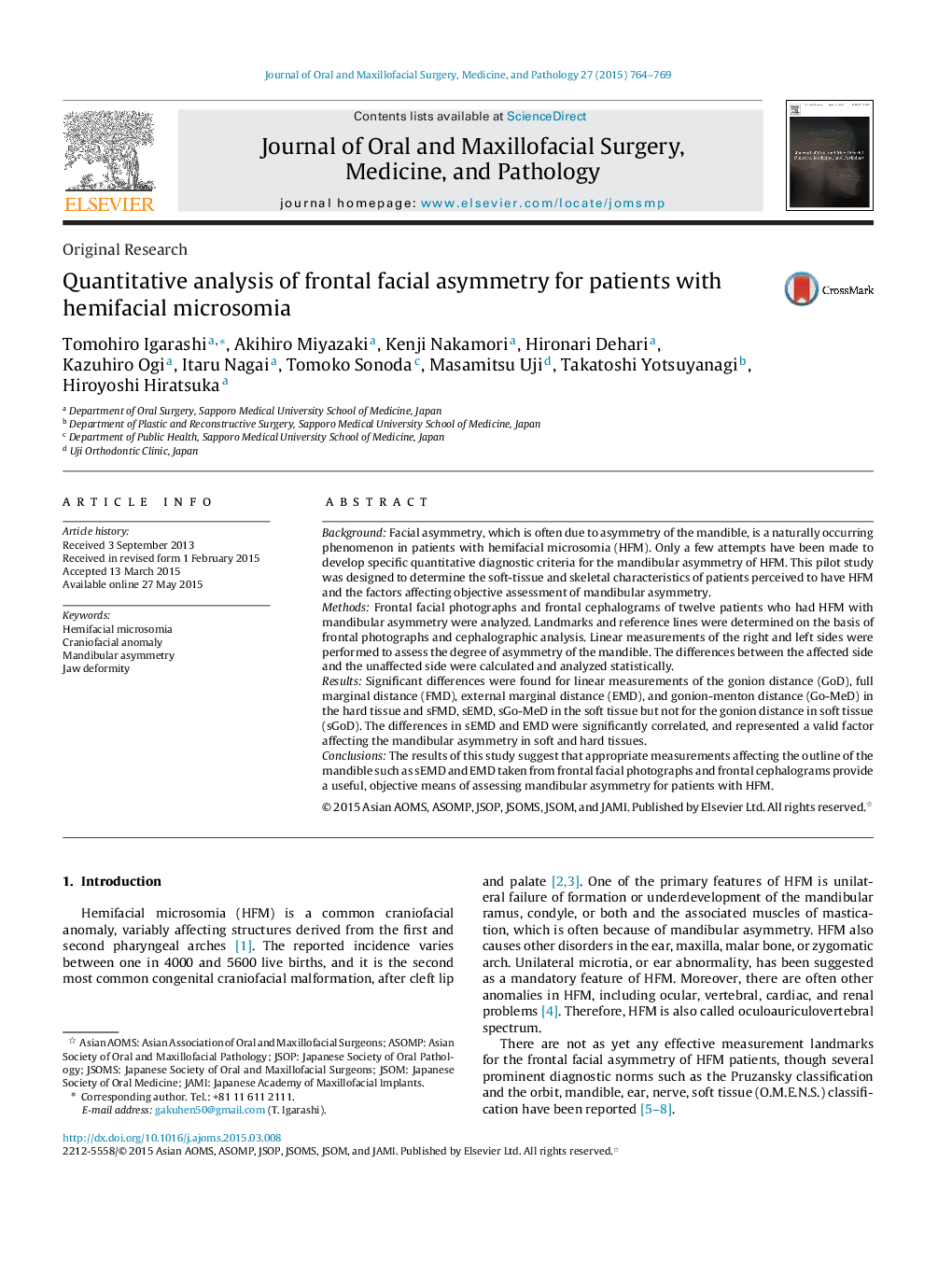| Article ID | Journal | Published Year | Pages | File Type |
|---|---|---|---|---|
| 3160378 | Journal of Oral and Maxillofacial Surgery, Medicine, and Pathology | 2015 | 6 Pages |
BackgroundFacial asymmetry, which is often due to asymmetry of the mandible, is a naturally occurring phenomenon in patients with hemifacial microsomia (HFM). Only a few attempts have been made to develop specific quantitative diagnostic criteria for the mandibular asymmetry of HFM. This pilot study was designed to determine the soft-tissue and skeletal characteristics of patients perceived to have HFM and the factors affecting objective assessment of mandibular asymmetry.MethodsFrontal facial photographs and frontal cephalograms of twelve patients who had HFM with mandibular asymmetry were analyzed. Landmarks and reference lines were determined on the basis of frontal photographs and cephalographic analysis. Linear measurements of the right and left sides were performed to assess the degree of asymmetry of the mandible. The differences between the affected side and the unaffected side were calculated and analyzed statistically.ResultsSignificant differences were found for linear measurements of the gonion distance (GoD), full marginal distance (FMD), external marginal distance (EMD), and gonion-menton distance (Go-MeD) in the hard tissue and sFMD, sEMD, sGo-MeD in the soft tissue but not for the gonion distance in soft tissue (sGoD). The differences in sEMD and EMD were significantly correlated, and represented a valid factor affecting the mandibular asymmetry in soft and hard tissues.ConclusionsThe results of this study suggest that appropriate measurements affecting the outline of the mandible such as sEMD and EMD taken from frontal facial photographs and frontal cephalograms provide a useful, objective means of assessing mandibular asymmetry for patients with HFM.
